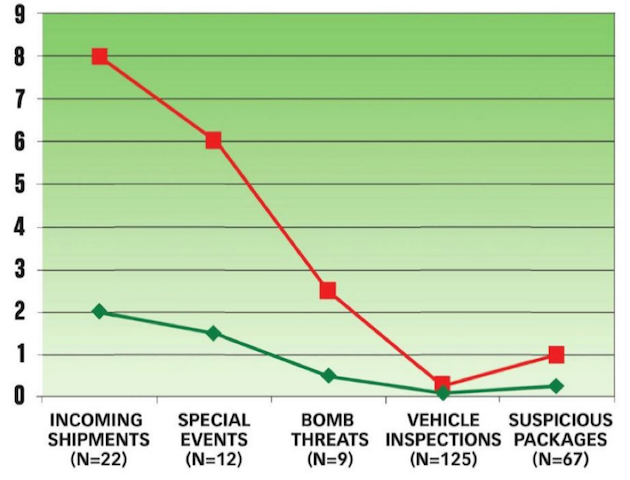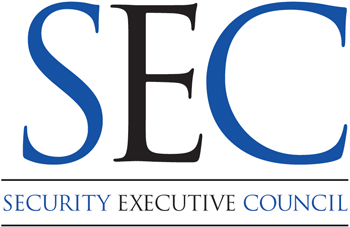Created by George Campbell, Security Executive Council Emeritus Faculty member
We hear a lot about the difficulty of documenting Security’s return on investment. Consider this example.

A global manufacturing organization is highly diligent in screening who and what enters its perimeters and works under a variety of rigorous security regulations. It is also aggressive in weeding out labor-intensive (i.e. costly) security processes. The organization saw the effectiveness of canine teams in security operations tasks and sought to determine the potential value of their use in selected search activities.
The five search routines you see in the chart above are conducted in high-risk or high-threat situations. Any reader involved in physical security operations can appreciate the rigor employed in these examinations. Each routine was timed over a period to obtain an average, and the results are seen in the red line. The numbers on the left axis indicate the hours involved.
It should be understood that the examinations involved a variable number of officers depending on the complexity of the conditions and tasks. For example, incoming shipment inspections always involved two officers, and special events routinely assign a team of three. The initial test period was two weeks, and the total hours for all task assignments for the duration of this analysis was 397 hours.
The fully loaded cost per hour for the contract officers at this site was $23.50. The cost for all five routines was $9,329. Because as the bomb threats, special events and suspicious package events were neither anticipated nor scheduled, these assignments required taking officers off normal shift duties and backfilling from a reserve pool (@ straight time) for 88 of the total hours, so an additive of $2,068 was incorporated for a total test period cost $11,397. If we were to use this figure for an annual estimated cost, we have a total of $296,322.
A canine team was engaged for a two-week test and subjected to the same number of events under similar conditions. The total consumed time for a dog and handler team was 81.5 hours. The hourly contracted cost of a canine team for this location was $72 per hour or a total of $5,868 for the test. Since canine teams are typically scheduled for assignments, this assessment assumed a work year for the canine team at 60% of a fully staffed post (2,080), or 1,248 hours. The annualized cost would be $89,856, and the return for this investment would be achieved in just 3.5 months.
This examination also sought to test the effectiveness of the exclusive use of security officers versus a single dog and handler team. Nitrate contraband and a drug sample were randomly deployed, and the canine team was 100 percent effective in identification. The officer team was only 30 percent successful. Consumed time clearly is a cost driver, but less consumed time with significantly greater effectiveness is a clear discriminator in these test results.

